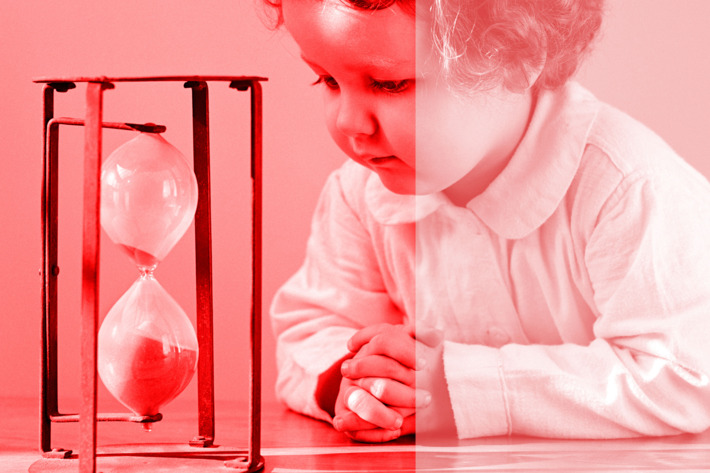Families with newborns know babies follow their own schedule. But after a while, about the time a baby starts to smile, a rhythm develops.
So babies do develop a sense of time. Research suggests this happens about the one-month mark. For example, in a 1972 study, researchers placed month-old infants in a dark room. A light was turned on every 20 seconds. When the experiment was repeated without the light, the babies’ pupils still constricted every 20 seconds; they were antici pating the light change.
pating the light change.
This sense of time continues to progress through the first year. A study published in 2010 in the journal Developmental Science showed that babies between 6 and 10 months could differentiate between different periods of time. The authors showed babies an object that would appear every two seconds. When the interval was lengthened to four seconds, the babies’ looking time increased, suggesting they noticed the difference. But the progress isn’t linear, it comes more in fits and starts. For example, around the ages of three to four, children make more judgment errors, like thinking red cars travel faster.
The bottom line is developing a sense of time takes time. Any parent who has endured multiple rounds of “Are we there yet?” knows exactly how that works. But just be patient; a realistic understanding of time emerges eventually.
For more information, visit http://nymag.com/scienceofus/2017/05/heres-how-babies-develop-a-sense-of-time.html . The photo came from that site.
